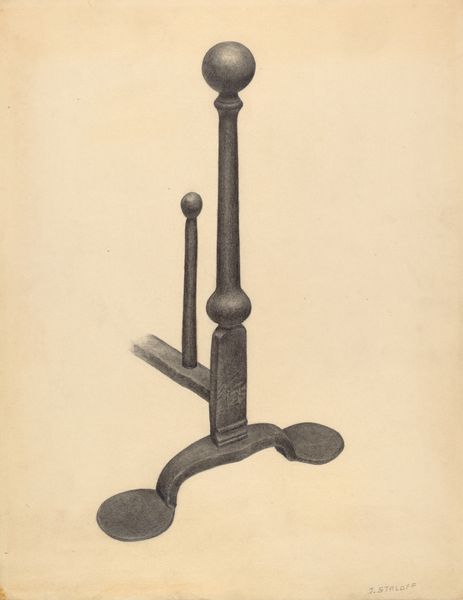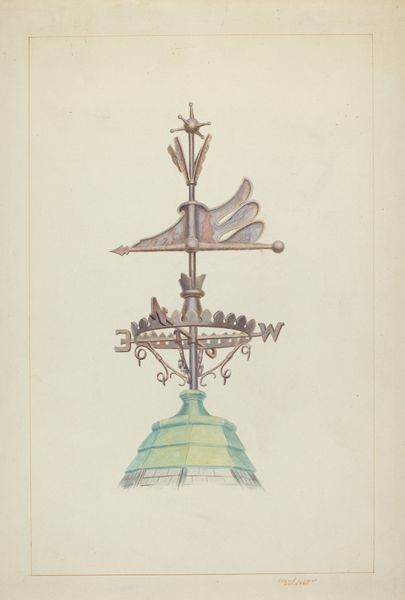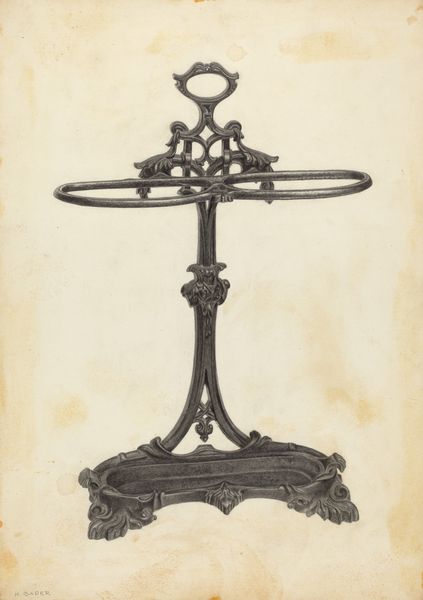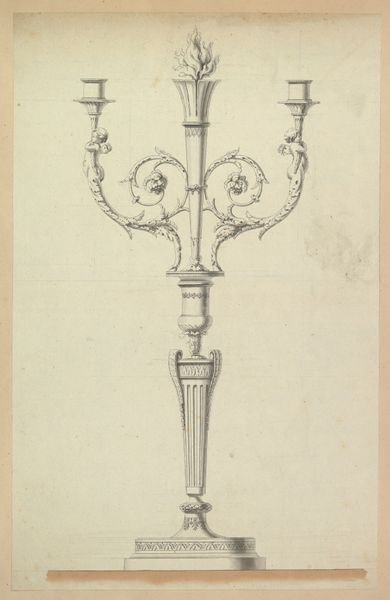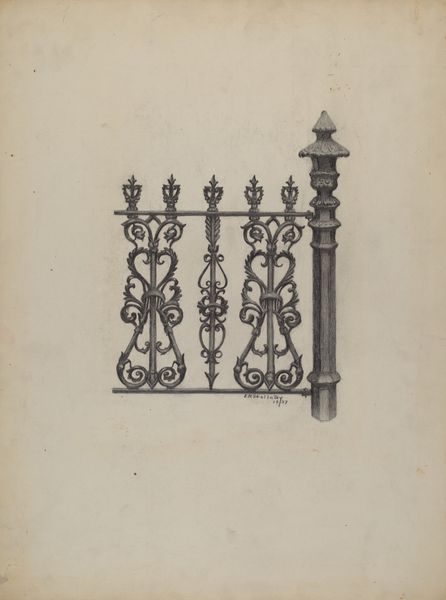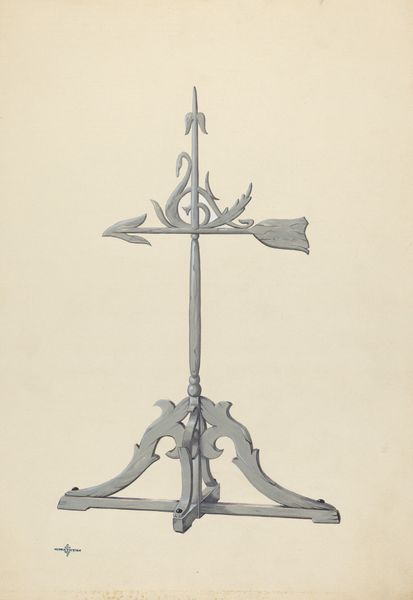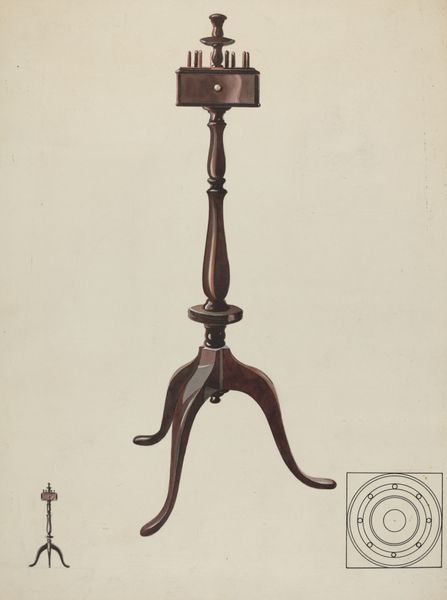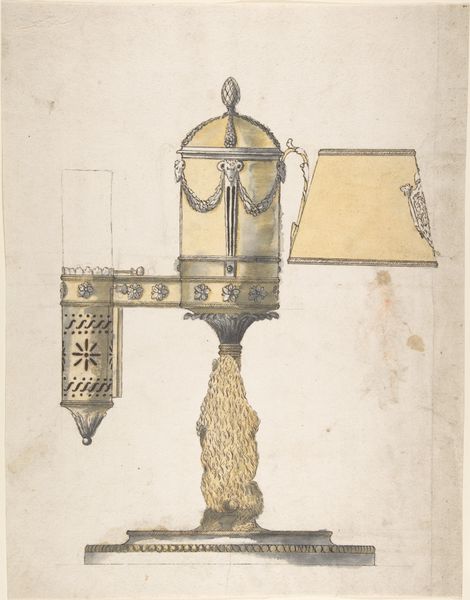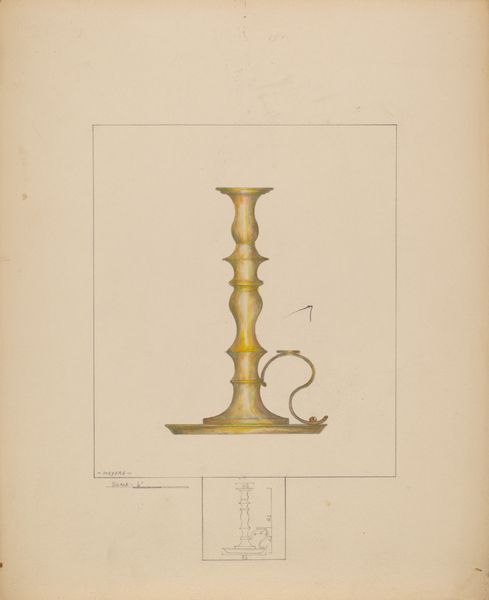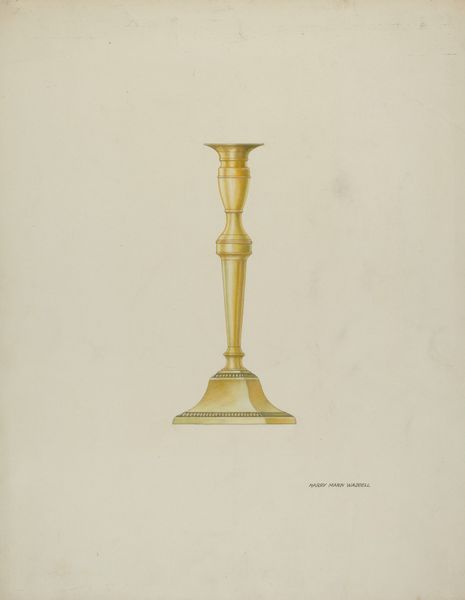
drawing, watercolor
#
drawing
#
aged paper
#
toned paper
#
light pencil work
#
watercolor
#
watercolor
Dimensions: overall: 27.5 x 18.7 cm (10 13/16 x 7 3/8 in.) Original IAD Object: 48" long; 42" high
Copyright: National Gallery of Art: CC0 1.0
Curator: We're looking at Ernest A. Towers, Jr.'s "Weather Vane," circa 1938. It's a delicate rendering in watercolor and light pencil work. What are your immediate thoughts? Editor: It has this odd combination of the technical and the whimsical. It's as if a blueprint for an old weather vane has been overlaid with a child's naive watercolor painting. The scale, that’s roughly a foot long, right? Curator: Yes, you can see from the little drawn rectangle in the top-left of the aged paper it shows a 14”x4” view of its height and width. The watercolor and toned paper certainly give it a nostalgic feeling, an echo of times gone by. Editor: Precisely. But what's really grabbing me is the construction depicted in the rendering. The layering of metal – you've got a sense of heft despite the watercolors, the implication of the way it moves with the wind, this gives real weight to the object it depicts. The craftsman of the vane paid a great deal of attention to it's aesthetic. Curator: A compelling observation. Structurally, the placement of the fulcrum implies the balance of forces necessary for it to function correctly. Note the repetition of circular motifs. And consider the elegance of the arrow; it directs our gaze, not just to the wind’s origin, but into the future, to a point beyond its creation. Editor: The means by which we can find where to travel! The arrow serves less as an instrument of power and more as an open ended tool, almost a collaborative mechanism. What do you think Towers intended in selecting this vane? I'd want to better know who manufactured these types of objects in that period. Curator: Perhaps Towers saw in the weather vane an intersection of art, craft, and utility—a symbol of humanity's ongoing attempt to understand and harmonize with the natural world through semiotic objects. Or maybe it was the semiotic tension inherent in its dual nature: a functional object imbued with ornamental design. It really encapsulates art deco design during that period. Editor: In short, this little watercolor sketch leads us down interesting roads, making one ponder. Thanks! Curator: Indeed, a testament to the enduring power of observation, a lovely example of the era's style meeting function.
Comments
No comments
Be the first to comment and join the conversation on the ultimate creative platform.
